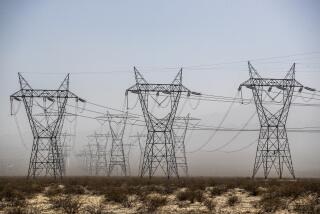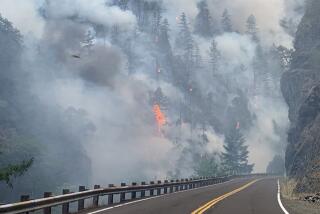The Next L.A. / Reinventing Our Future : PREPAREDNESS : IDEA FILE: Decentralize and Toughen Existing Power Grid
- Share via
How it works
Utilities such as the Department of Water and Power rely on complex systems of large, expensive components that can be damaged during earthquakes. These components could be strengthened and the overall system altered so it relies more on smaller power generators and that are spaced farther apart.
Benefits
During the Northridge quake, ceramic insulators cracked and shorted out. Receiving stations were badly damaged and a transmission tower near Castaic toppled over. Technology could be developed to harden these components. For instance, the utility industry is developing a plasticized material to replace ceramic insulators. The system also could be restructured so that it relies less on large-scale, centrally located components and more on smaller ones scattered across the region.
Short term or long term impact
Designing stronger components is a near-term strategy. Decentralization is far more expensive and would take longer.
Supporters
Those who support this say that decentralizing the system could involve switching to different power sources such as solar, wind and thermal energy. These sources are more environmentally “clean” than traditional sources, such as coal or nuclear energy.
Opponents
The utility industry is developing ways to harden the system all the time. But it is less impressed with decentralization. That option involves switching to new systems that may not be as reliable as the current grid. Solar energy, for instance, cannot be collected at night and must be stored then, requiring reliance on highly expensive and bulky batteries.
The cost
For each electrical utility, it might take tens of millions, if not billions, of dollars to strengthen and decentralize. Over time, however, the savings from natural disasters might be worth it.
Reality Check
Wholesale decentralization is unlikely.
More to Read
Sign up for Essential California
The most important California stories and recommendations in your inbox every morning.
You may occasionally receive promotional content from the Los Angeles Times.









